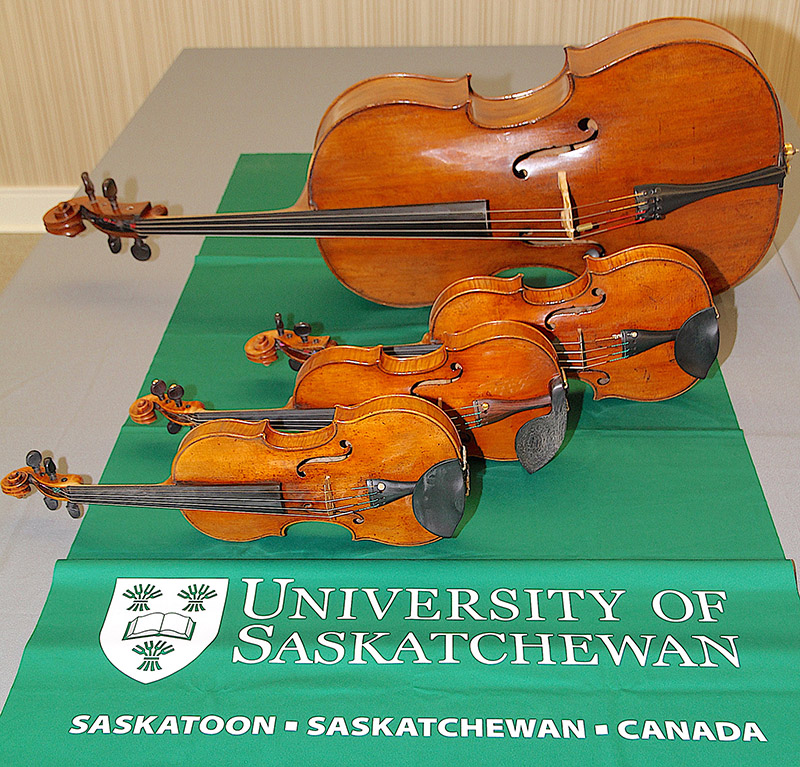Uniquely USask: Awe-inspiring Amati instruments the pride of campus
They are hand-crafted priceless pieces of history spanning more than 400 years, a quartet of exquisite Amati instruments that is unique in Canada and the pride of USask. And they come complete with stories as rich as their harmonic tones.
By James ShewagaUSask’s four Amati instruments were acquired over a five-year period in the 1950s by Saskatchewan farmer and amateur collector Steve Kolbinson. (Photo: Dave Stobbe)
From a violin smuggled out of France for safekeeping during the Second World War and another once owned by a world-famous musician, to an extremely rare viola commissioned by Pope Paul the Fifth and a cello lost in time for decades in a dusty attic in the Earl of Plymouth’s castle in England, the Amati instruments are true treasures.
“If only they could talk, right?” said Dr. Gregory Marion (PhD), head of USask’s Department of Music. “There is a remarkable story to go with every one of these instruments.”
The Amati instruments were hand-crafted in the 1600s in Italy by the famous Amati family—considered the first great luthiers—who made some of the world’s most sought-after instruments, with many selling for more than a million dollars.
“The Amati family is as well-known in performance circles as Stradivarius or Guarneri,” said Marion. “In fact, the Amatis had a hand in even training some of the Stradivarius people.”

USask’s four Amati instruments were acquired over a five-year period in the 1950s by Saskatchewan farmer and amateur collector Steve Kolbinson. In 1959, Kolbinson offered the priceless collection to the university for a nominal fee of only $20,000, with the stipulation that the instruments would be used in ways to benefit the people of the province.
“It is a big deal to have these instruments, and their history on campus is very intriguing and we are very pleased to have them here,” said Marion. “There are some different thoughts on whether instruments as valuable and irreplaceable as these should be museum pieces or performances pieces. But my impression of what Mr. Kolbinson would have wanted is that it would be hard for these to be a value to the people of the province of Saskatchewan if they weren’t being performed.”
From USask music students to the former Amati quartet of musicians, the instruments have been performed in class and in concert, including for Queen Elizabeth II on Saskatchewan’s 100th anniversary in 2005 and most recently at a concert in January in Convocation Hall.
“Maybe the most unique aspect of our Amati collection is the fact that we have a quartet of these instruments, which is rare in itself,” said Marion. “But it is the sound quality and the sound colour that is truly special.”


